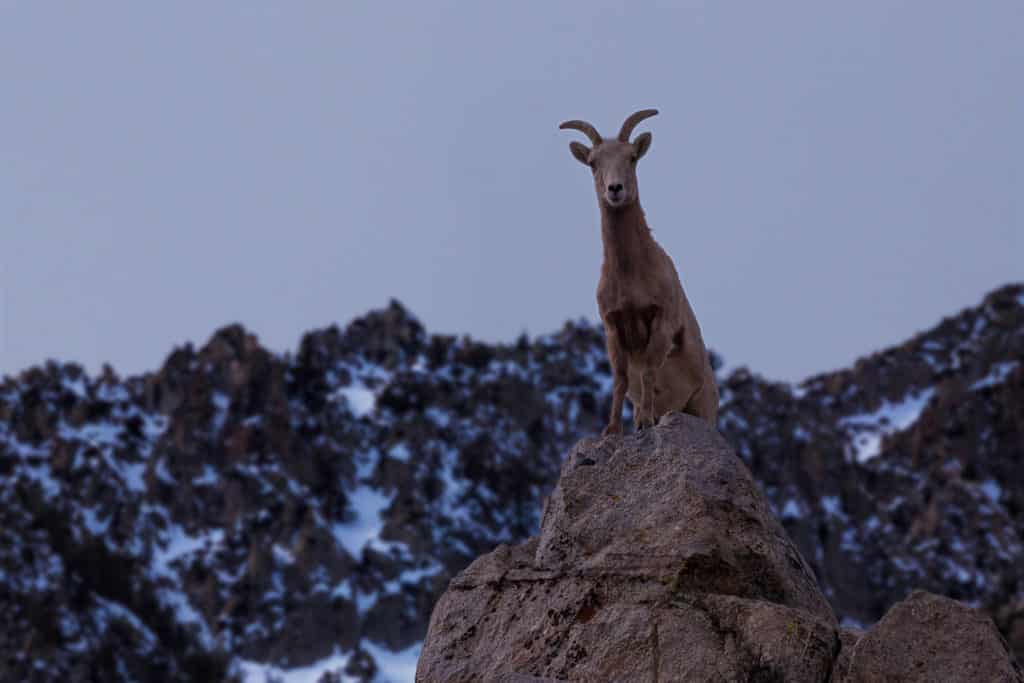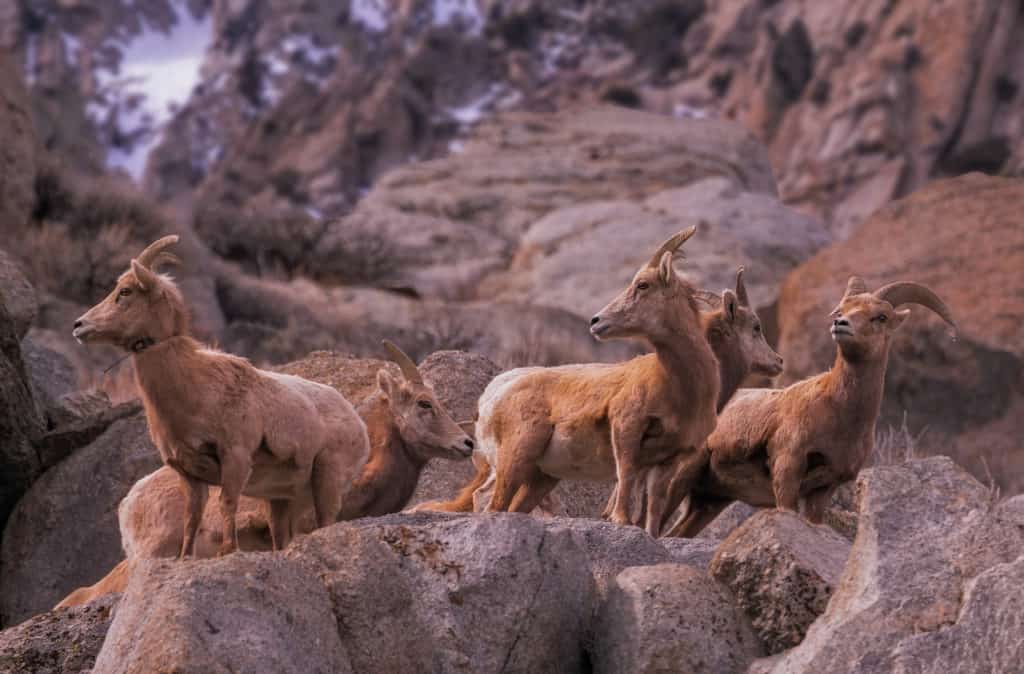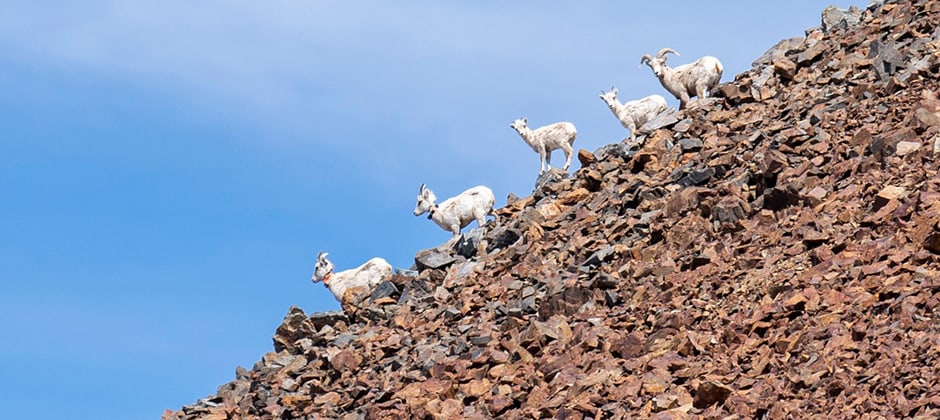Share this article
For bighorn sheep, the eyes have it
Sierra Nevada bighorn sheep may not always follow the herd. Sometimes, they may make decisions about migration based on their perception, researchers believe.
The federally endangered sheep subspecies usually spend their summers at high elevations in the Sierra Nevada. But as winter approaches, bringing heavy snowfall and high winds, the sheep sometimes travel down to lower elevation areas. While these areas provide more forage and easier movement, the sheep may also come into contact with their chief predators—mountain lions. “They are trying to balance that risk and reward when migrating,” said Danielle Berger, a PhD student in the Department of Wildland Resources at Utah State University.
But not all bighorn sheep migrate. Berger began to wonder what the decision-making process was for Sierra Nevada bighorn (Ovis canadensis sierra) sheep when figuring out whether or not to migrate. Berger said wildlife managers also translocate Sierra Nevada bighorn, a species whose numbers fell to around 100 individuals in the 1990s. She hoped finding out more about their migratory decisions can help inform these efforts in the future. “When we put them in the new habitat, we don’t always get the behavior we would expect,” she said. “Sometimes they stop migrating.”

Bighorn sheep use both social cues and individual perception when making decisions whether to migrate.
Credit: Chris Cleveland
Berger collected a series of observations and ran a number of models in a study she published in Frontiers in Ecology and Evolution to help answer some of her questions.
First, the team used observations of bighorn sheep to uncover patterns of fall migratory behavior. They divided the bighorn into two groups—migrants, found below 2,850 meters of elevation during the winter, and non-migrants, remaining above.
In the models, she and her colleagues controlled for known drivers of migration, like an individual’s past migratory experience, social group behavior or following the herd, and the history of that social group on the landscape. “Using this special modeling framework allows us to separate out what bighorn know about low-elevation habitat,” Berger said.
They then tested what bighorn sheep know about their migratory habitats using three models. One model assumed the sheep had perfect information about forage availability, the amount of snow-free area, number of mountain lions (Puma concolor) in the area and distance to steep terrain. “To get away from predators, they run up really steep cliffs,” she said. “They need to be as close to steep terrain as possible if they are going to feed in risky habitat where there are mountain lions.”
The second model was a perception-based model, predicting that individuals act on partial sensory information, like sight, of their environment. In other words, it tested whether what they could see from their high-elevation range caused them to decide to migrate. The last model suggested individuals make decisions based on their memory of the previous year’s experience.
The model that best predicted the observed migratory patterns was the perception-based model. The sheep seem to be deciding whether to migrate based on what they perceive about the conditions in their present environment. “This is super advantageous,” Berger said. That’s because conditions can change year-to-year in the Sierra Nevada, especially with the looming threat of climate change. “I think it’s really encouraging when we think about climate change and increased environmental variability. This species may be able to match its behavior to a rapidly changing climate in a way that is beneficial for bighorn.”

Bighorn sheep use steep cliffs to avoid their mountain lion predators. Credit: Chris Cleveland
That’s also something unique to the short-distance migrants, Berger said, since they can actually see the areas where they are considering moving to. For other longer distance migrants, she said, they are more likely to mismatch the timing of their migration with the presence of resources. “But I’m hoping bighorn sheep don’t ever have that problem,” she said.
But Berger said they also found that perception isn’t the only important thing in the decision-making process. An individual’s past migratory experience, social groups and available habitat, which they controlled for in their models, are also important.
Berger said all these findings can be used to inform translocation. They tested the model out to see if it could predict when an individual would migrate based on what it’s done previously, the group it’s part of and how much of the landscape it could see. The model was accurate 83% of the time.
“It’s important who you translocate. But it’s also important where you put them and how much of that low elevation range they can see,” she said.
Sierra Nevada bighorn sheep likely will be considered for delisting under the Endangered Species Act sometime in the near future, Berger said. She hopes her research can help inform that decision.
Header Image: Researchers tapped into what strategies Sierra Nevada bighorn sheep use when deciding whether to migrate. Credit: Ming Poon








